How to Make a Spit Roast
The Complete Guide (2022 Update)
This is a full step by step guide on how to make a perfect spit roast.
So if you want to impress everyone by cooking a delicious roast on a spit, you’ll enjoy the actionable tips in this new guide.
Let’s dive right in.
Contents

Chapter 1
What is Spit Roasting

Chapter 2
Where Did Spit Roasting Come From

Chapter 3
How to Make a Backyard Spit Roaster

Chapter 4
What Fuel to Use for a Spit Roast

Chapter 5
What to Cook on a Spit Roast

Chapter 6
How to Plan a Spit Roast
About the Author
Just like many other kiwi blokes, Zoran loves a well cooked, juicy roast!
His parents are originally from Croatia, where cooking spit roast lambs and suckling pigs is a huge part of the food culture.
Having tried many different techniques and recipes, he sure knows what he is doing when it comes to making an awesome roast.
Now he wants to share his knowledge so you too can prepare a mouthwatering spit roast in your own backyard.
This guide will be most helpful if you are completely new to spit roasting.
However, seasoned backyard chefs will also find practical advice and useful ideas in this guide.
Here’s to a delicious roast! Cheers!
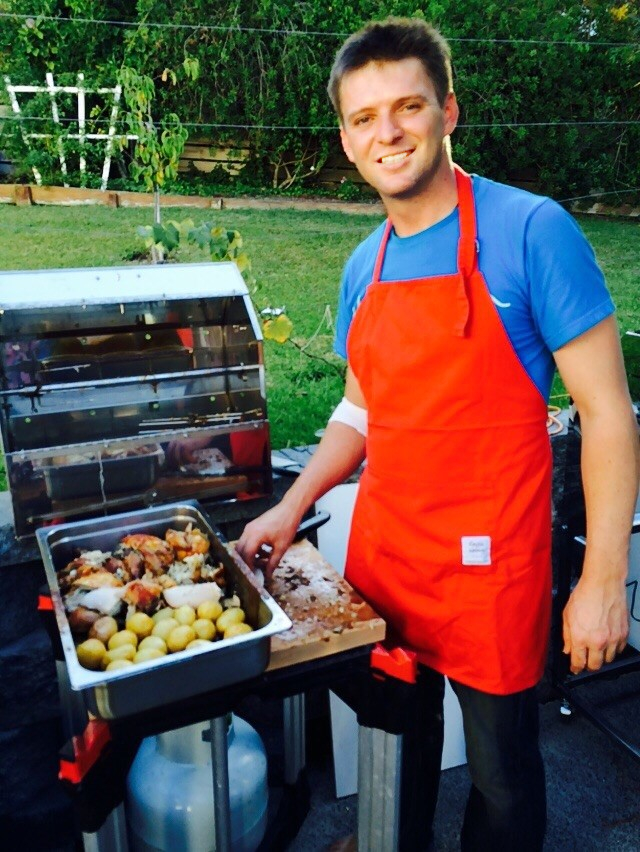
Chapter 1:
What is Spit Roasting?
You may have heard people telling stories about how they tried that amazing roast cooked on a spit (which is often a part of wedding or birthday party catering).
So, what is all the buzz about?

Spit roasting (also called rotisserie roasting) is a way of cooking different cuts of meat and often whole beasts.
A spit is a long metal rod that has one sharp end (kind of like a spear) to make it easier to skewer the meat.
Like most types of cooking, spit roasting requires a source of heat such as open fire, hot coals or gas (when cooked in a special barbecue).
Traditionally, wood coals were used but these days many backyard chefs prefer to use charcoal for cooking a spit roast.
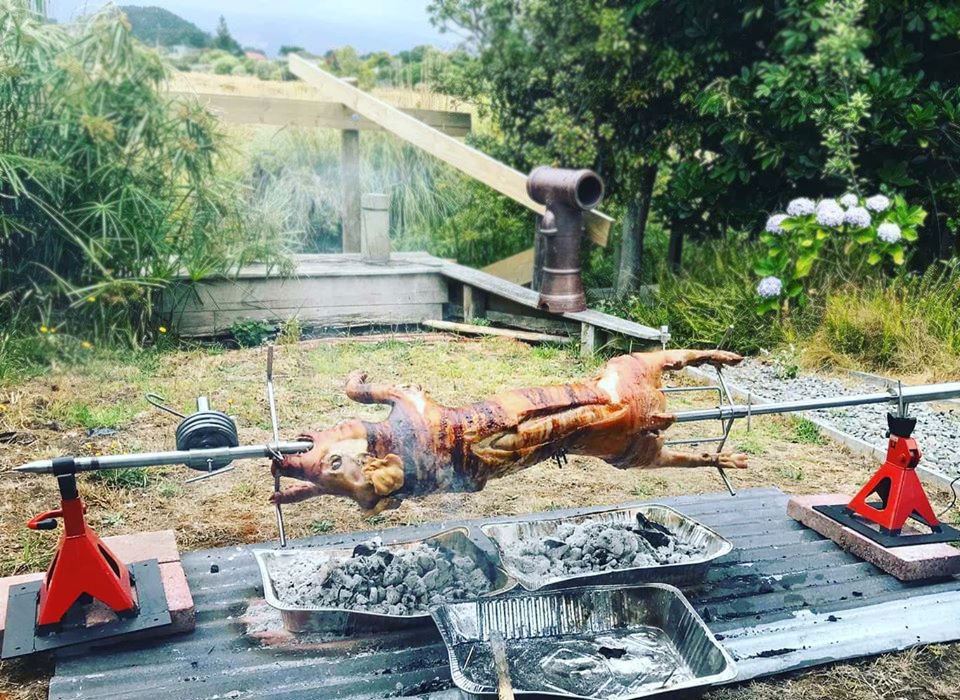
A spit roast is definitely an impressive way of cooking
Spit roasting is one of the oldest methods of cooking meat and is also one of the most entertaining.
People love to show off their rotisserie cooking skills when a large number of people are invited for lunch or dinner.
Hunting and fishing enthusiasts really enjoy cooking their game on a spit roast.
It is relatively easy to set up an outdoor rotisserie with only a few tools and materials gathered nearby.
But before we get into building one in your backyard, let’s take a trip back in time and learn about the history of spit roasting.
Chapter 2:
Where Did Spit Roasting Come From?
Humans have been using this way of cooking meat for a very long time.
No one can say for sure but a good guess would be that when humans learned how to light a fire, this method of roasting has emerged.

It probably dates back to the times of prehistoric hunters who put the meat on long sharpened sticks and roasted it over the campfire.
Some people believe that African tribes were the first to invent this method of grilling meat many thousands of years ago.
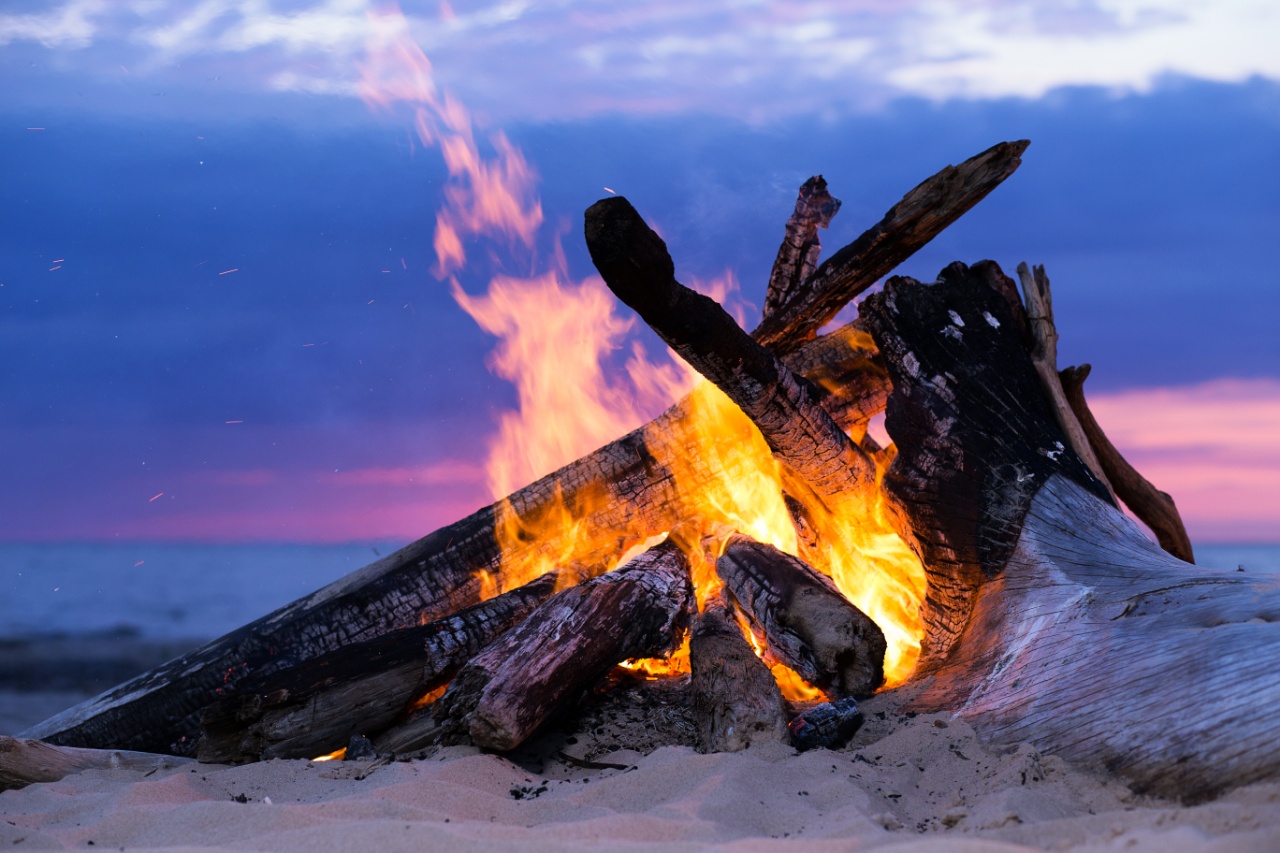
Fire was used to cook food for thousands of years | Freepik
Throughout the middle ages, mostly wealthy people could afford the luxury of a spit roast. Their kitchens would prepare this feast for very special occasions.
A youngster called a ”spit boy” or a ”spit jack” usually sat near the fire and continuously rotated the spit to make sure the meat cooked well on all sides and did not burn.
Later, mechanical turnspits took the place of the manual ones. These mechanical spit jacks could be powered by a medium-size animal such as a donkey.
With the advancement in kitchen tools, spit turning techniques have evolved. Nowadays spit roasters are usually operated by an electric motor attached to the spit.
Now that we know what a spit roast is and where it came from, let’s take a look at how you can build your own DIY rotisserie.
Chapter 3:
How to Make a Backyard Spit Roaster
What better way to really impress your guests than by setting up a spit roaster in your backyard and cooking food right in front of the amazed crowd?
Making your own rotisserie roaster is actually pretty easy, and soon you will learn exactly how to do it in your own backyard.

The Base
Option 1: Earth Pit
Using a shovel or a spade dig a rectangular pit in the ground.
The size of the pit will be determined by the size of your roast (a whole pig will require a longer pit than a lamb shoulder).
A good rule of thumb is to dig a pit slightly wider and longer than the item you are about to cook.
Make the pit around 10cm deep so the firewood and coals don’t spill out.
It is also a good idea to compact down the dirt floor of the pit.
Pros:
- This is the cheapest option
- Requires the least amount of tools and materials
Cons:
- Only works if you have access to a patch of earth
- Can damage your pretty lawn
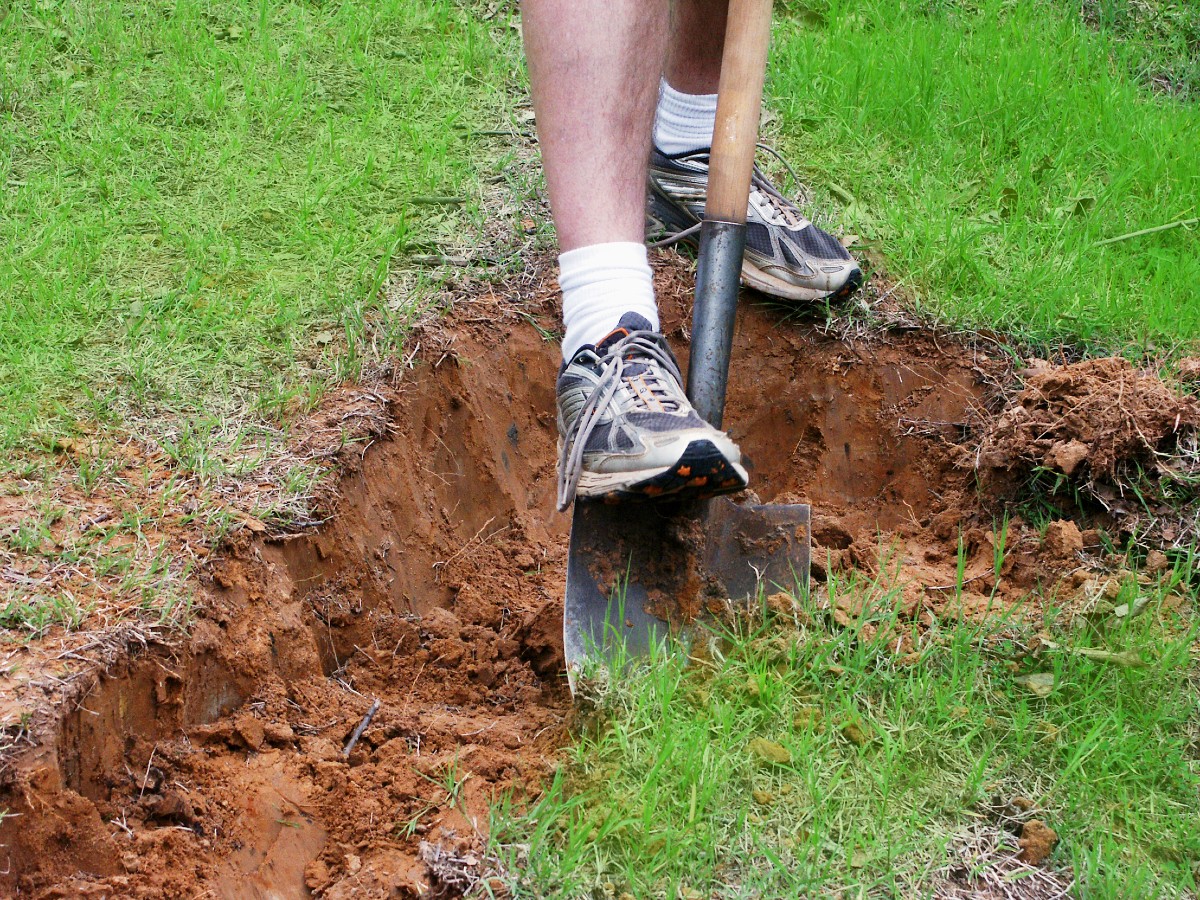
Digging an earth pit for a spit roast | Stockvault
Option 2: Raised Enclosure
This method of setting up the spit roaster can be used when your backyard area is paved.
The idea is to build a raised enclosure for the coals. You will need some bricks or cement blocks to build the walls.
Take the bricks and arrange them in a rectangular shape depending on the length of the spit (the supports can be placed either inside or outside of the enclosure).
The height of the brick wall should be at least 30cm to protect from the wind.
For the base, you can use a thick (at least 2mm) sheet of metal or place a layer of bricks in such a way that the whole area of the enclosure is covered.
Alternatively, you can layer the base of the enclosure with more bricks.
You can make this a fancy structure if you like.
Pros:
- Protects the lawn or paved area
- Can be disassembled and put away
Cons:
- You need materials such as bricks and metal sheeting
- Can be time-consuming to lay the bricks
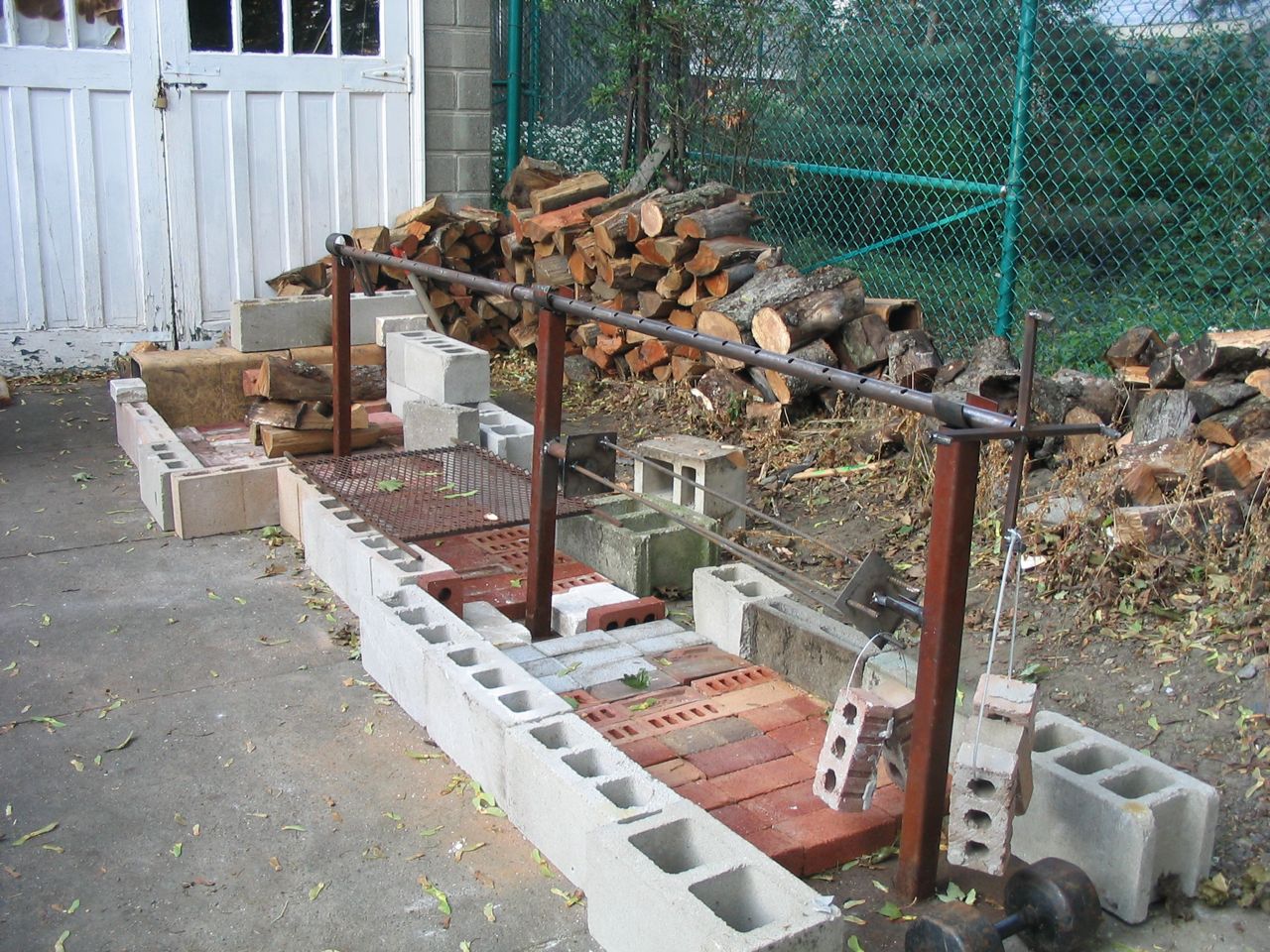
DIY spit roast structure made with bricks and blocks | Instructables
Option 3: Metal Firebox
Another easy method is to spit roast over a barbecue or a metal firebox.
An empty old metal barrel cut in half lengthwise can do the trick.
If you are a savvy metalworker, check out this tutorial on how to make a decent metal firebox.
The length of your firebox will again depend on what you are planning to roast.
Pros:
- Easy to move and transport
- Usually raised to waist height, so it is easier to manage
Cons:
- Probably the most expensive option
- You will need special tools if you want to build the firebox yourself
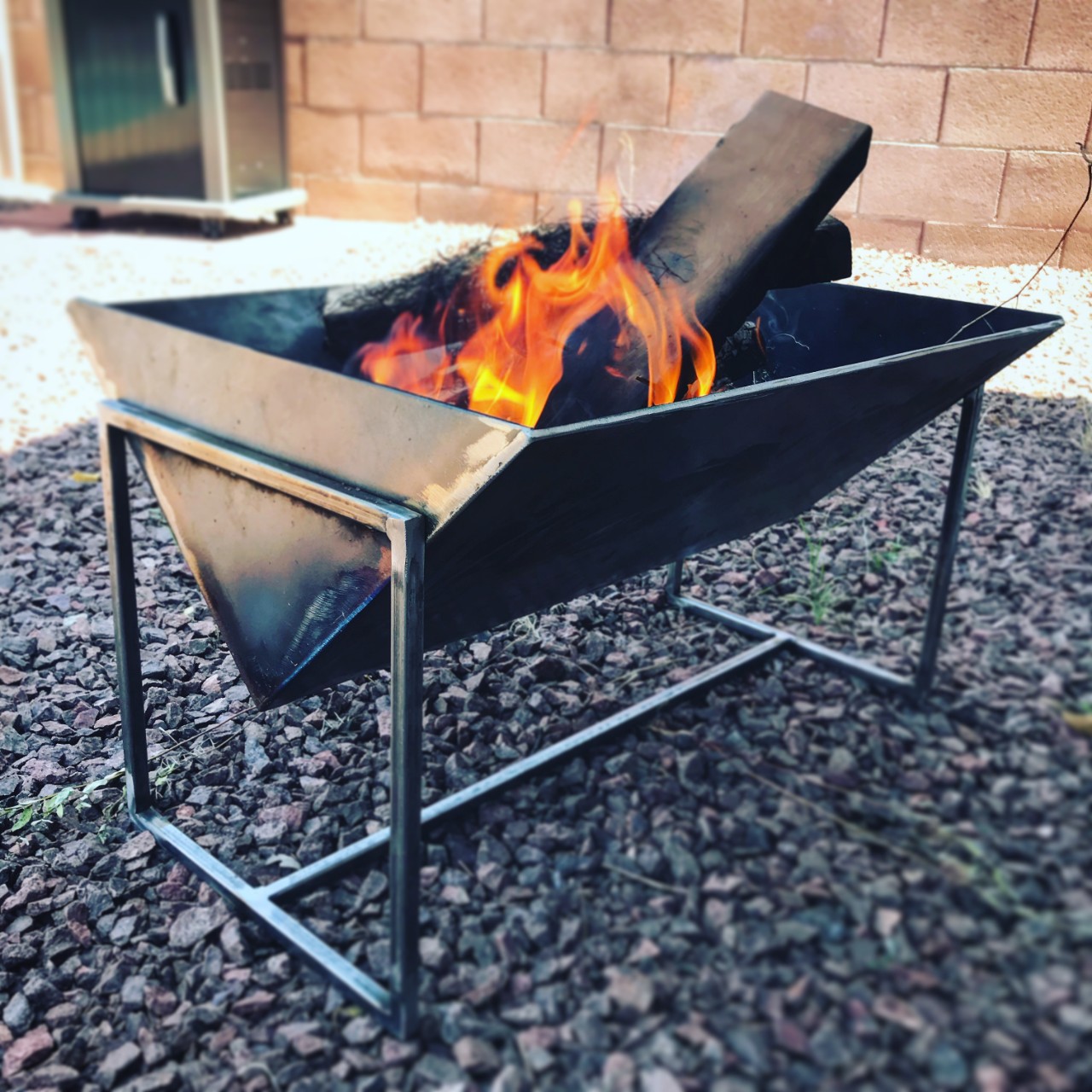
Metal firebox is a great option for making a spit roast | Instructables
The Spit
Now you will need the two vertical supports and the spit itself, along with a turning mechanism.
You can use a food-grade steel rod (1-1.5m long) for the spit.
One end will need to be sharpened to help with skewering the meat and the other end will attach to the spit motor or the turn handle.
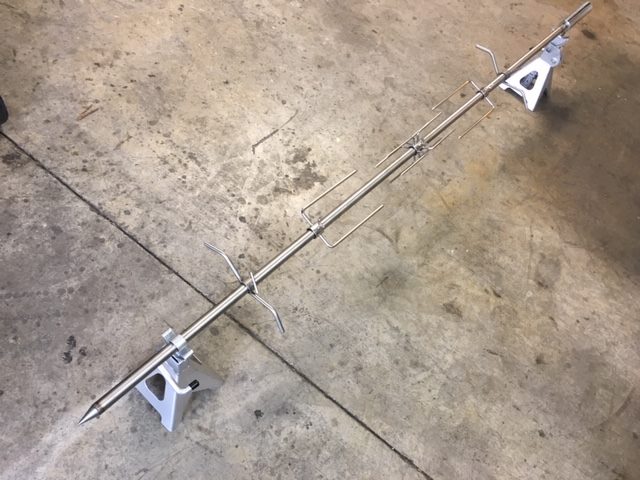
Full spit roasting kit with supports, spike braces and stretchers
The Supports
The best way to make the vertical supports is to use a tall tripod structure.
This can be made out of metal pipes or profiles welded or screwed together.
If you are building your spit roaster on grass or dirt, you can simply dig the metal pipes into the ground on each side of your base (this will save you time building the tripod).
Using hollow pipes for the vertical supports gives you an opportunity to easily insert an element that will hold the spit.
This element can be as simple as a Y-shaped tree branch.
Alternatively, you can use a power grinder to make a U-shaped cut on the top end of the support pipe.
Otherwise, you can grab a couple of clamps, as you see in the photo below, from your nearest DIY store.

Good example of a relatively simple spit roast support structure
The Motor
If you don’t wish to rotate the spit yourself and enjoy the party instead, you should invest in a good spit motor to do the job for you.
While there are plenty of suggestions on making a DIY motor from windscreen wipers and old drill parts, you really need something more reliable.
The last thing you want is for the scrap motor to fail and leave you turning the spit yourself for hours and hours.
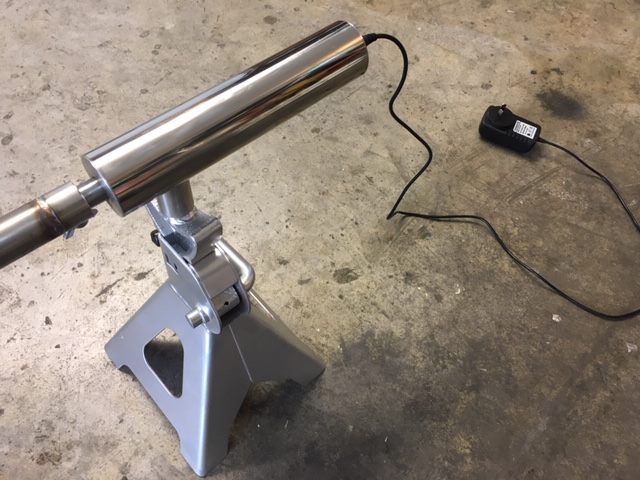
A reliable motor is your best friend when it comes to spit roasting
Well done for making it this far!
Now you have a creatively engineered spit roaster set up behind your house, or at least an idea of how to make one.
But we’re not done just yet. In the next chapter, we will discuss different types of fuel you can use.
Chapter 4:
What Fuel to Use for a Spit Roast
Choosing the right fuel is an important part of making a great roast.
You will learn what is the best fuel for spit roasting and how it affects the flavour of the meat.
Here is a quick summary of what you need to know about each of these fuel types.

Option 1: Wood
Wood is the oldest form of fuel known to people.
It is also the most flavoursome because when wood burns it releases a lot of gases, along with solids (char) and liquids (vapour).
In short, there are certain types of wood best suited as cooking fuel.
Generally, hardwood (deciduous) trees are the best for cooking as they burn slower and produce better charcoals than evergreen (coniferous) trees.
Hardwoods also don’t have as much sticky sap as evergreens do, which is a whole different story.
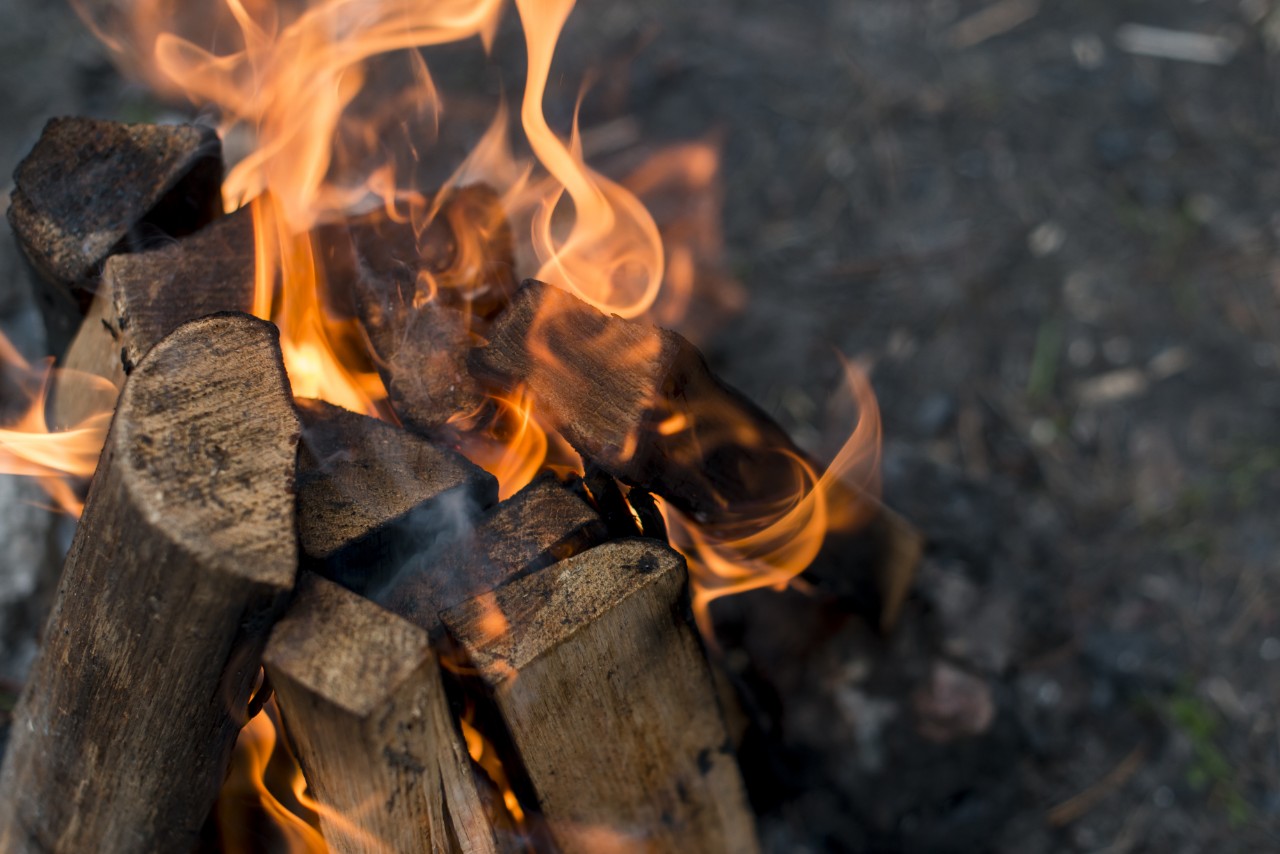
Wood logs are often used to fuel the spit roast | Freepik
Option 2: Charcoal
Using charcoal is sometimes easier because you can buy a whole bag of it at your local department or DIY store (heck, even petrol stations usually sell it).
Charcoal needs more time than wood to be set alight, but once it starts burning it retains temperature much better than regular wood.
Because charcoal releases fewer gases and solids while burning, it gives less flavour to the meat.
If you really like the smoky flavour it is a good idea to add a couple of wood logs to the fire.

Charcoal is probably a fovourite fuel when it comes to backyard cooking | Freepik
Option 3: Gas
Gas flame ovens and barbecues are also widely used for rotisseries and spit roasts these days, especially by hotels and restaurants.
Out of all fuel types, gas burns the cleanest and adds almost no flavour to the meat.
To make up for this, chefs add wood chips to the gas barbecue to produce that incredible smoky flavour.
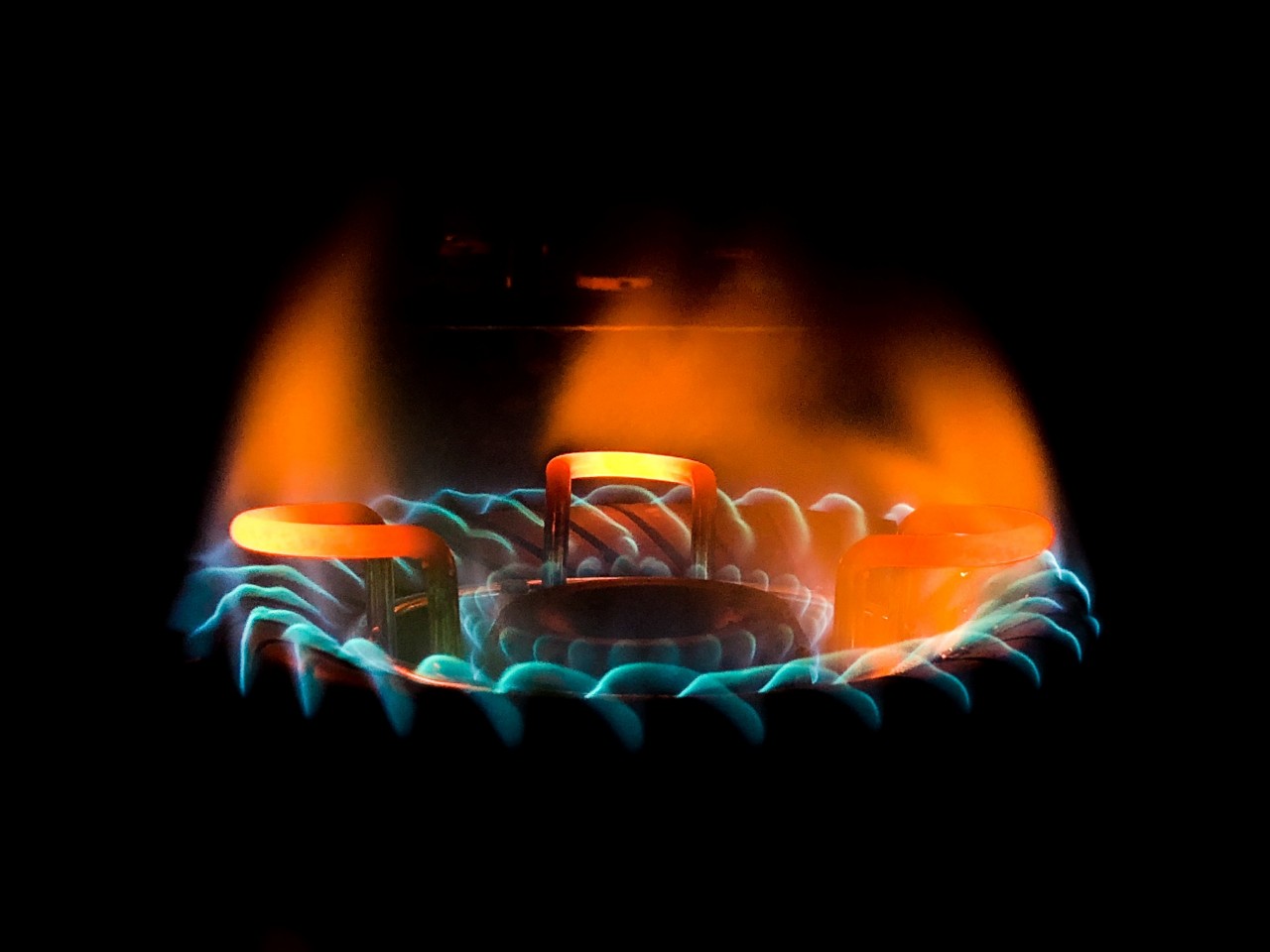
Commercial caterers often use gas because it is easy to transport | Freepik
How Much Fuel Will I Need?
Charcoal is the easiest fuel to use for the fire.
How much charcoal is required?
You will need to buy charcoal according to the size of your roast.
A simple rule of thumb is that for 1kg of meat you will need 1kg of charcoal.
It is a good idea to keep at least 2kg of extra charcoal in case you need to increase the flame.
So, for a 10kg roast, you will need to buy about 12 kg of charcoal.
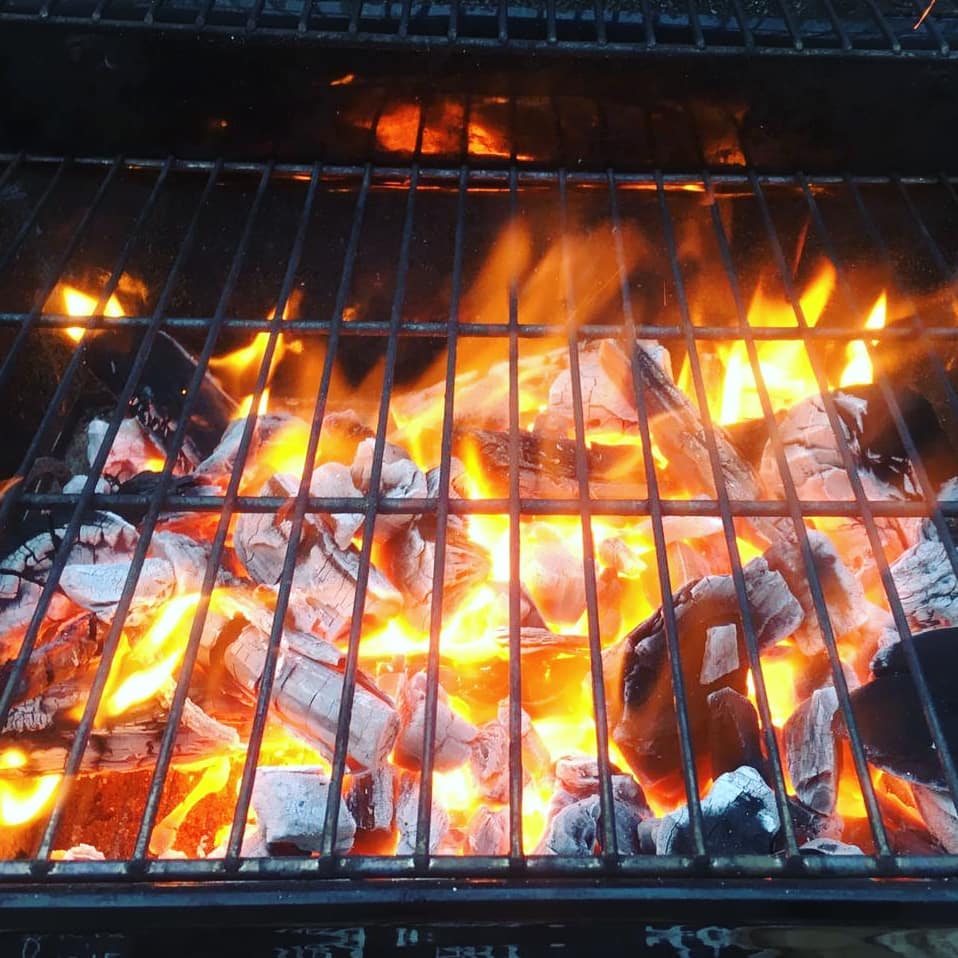
Charcoal is easy to use and is a reliable source of long-lasting heat
Place the ⅔ of the charcoal into the earth pit or the firebox.
Spread the charcoal to the length of the spit roast.
Now you can light the fuel with fire starters.
If you don’t have fire starters you can always make a small wood fire and add the charcoal to it once the fire is hot enough.
To avoid burning the meat, make sure there are no open flames under the roast.
The heat from the coals will be plenty to cook the meat well, while not burning the outside.
Fire Safety Tips
- Never use flammable fuels like spirits, petrol or oils to start the fire as it may result in injury.
- Wear heat-proof gloves when lighting the fire to avoid possible burns.
- Place your spit roaster in a well-ventilated area (ideally outdoors) to avoid the smoke indoors.
- Keep children, pets and irresponsible persons away from the spit roaster when you are working on it.
- Do not place flammable substances near the spit roaster.
- Follow your local council regulations regarding outdoor fire safety.
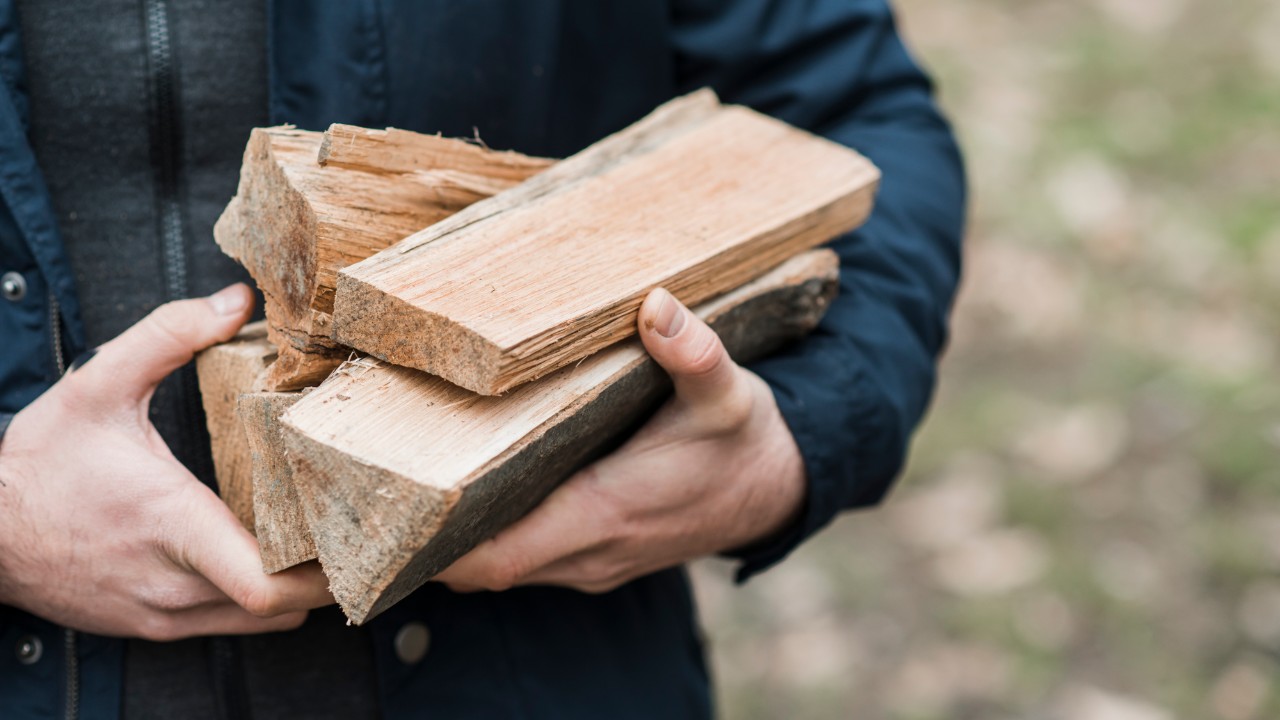
Choosing the right type of fuel for your spit roast is very important | Freepik
Great, now that you are somewhat of a fuel expert, let’s get into the yummy stuff!
The next chapter is all about what and how to cook on a spit roast.
Chapter 5:
What to Cook on a Spit Roast
“So what can you cook on a spit roast?”, you ask.
To be honest, you can make almost anything on a spit roast.
Even deliciously smoky roast vegetables, for the plant-based folk out there.
Let’s take a look at some of the most popular food items prepared in different parts of the world.

Whole beasts such as pigs and lamb are the most commonly prepared item on a spit roast.
Since the beginning of time hunters cooked their game over the fire.
This type of cooking is still a significant part of many cultures across the globe.
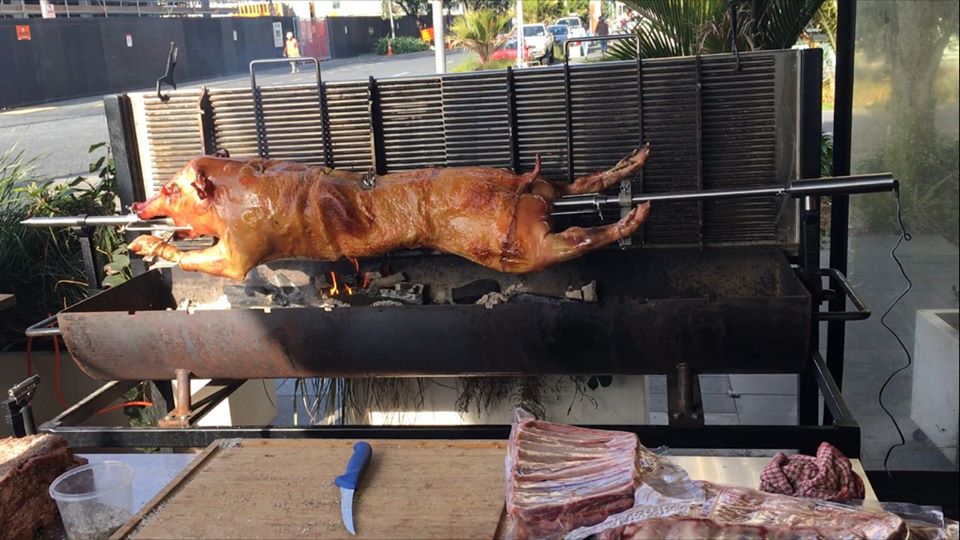
Commercial caterers using a spit roast setup to cook a whole pig
Kebabs are famous street food in many parts of the world.
It is usually prepared by cooking chicken, lamb or other meat on a rotisserie (often vertical).
Similar types of this dish include Turkish doner kebab, Greek gyro and Middle Eastern shawarma.
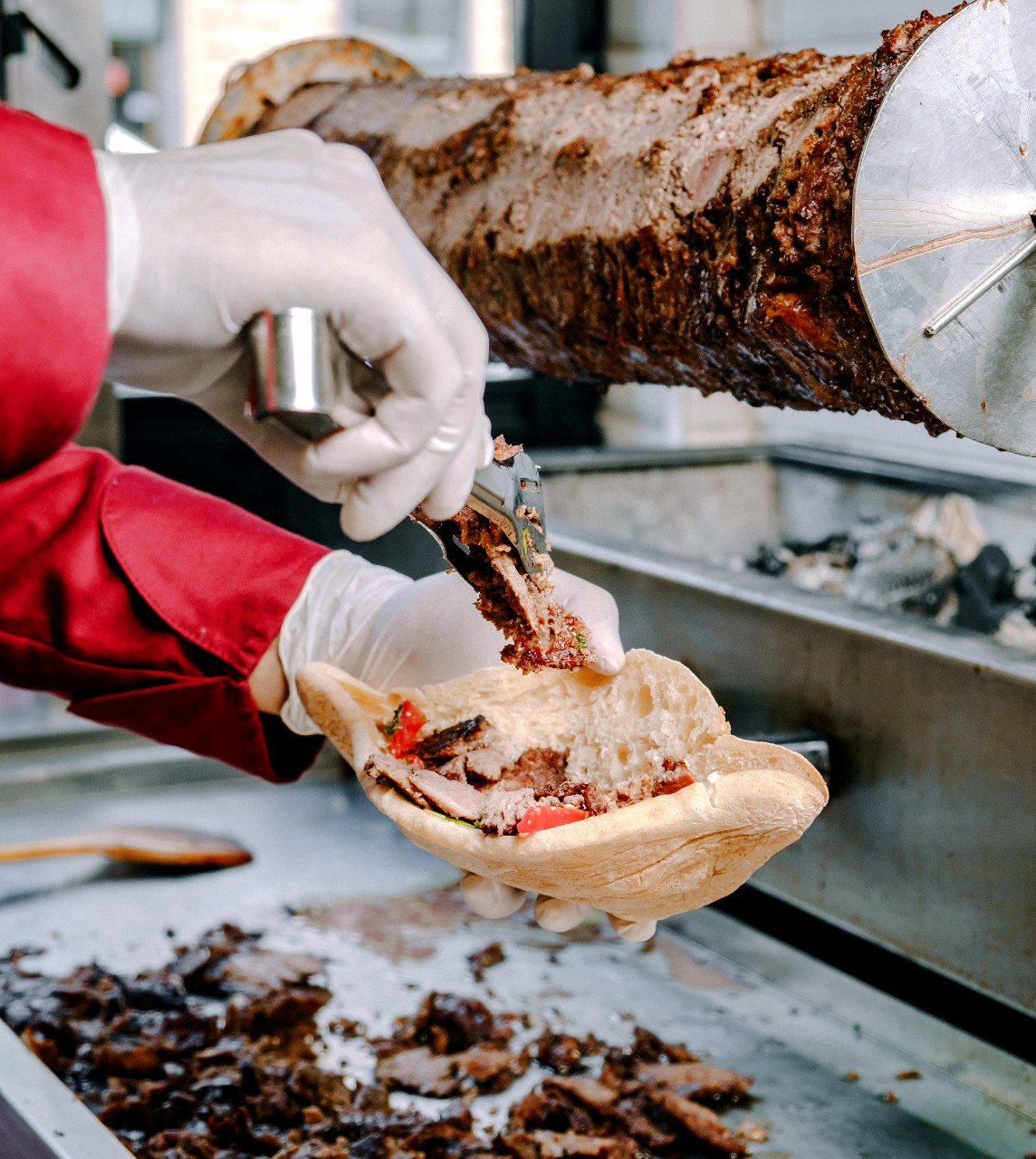
Almost everyone has tried a delicious kebab at some point | Freepik
Rotisserie chicken is one of the most popular food items in America and is sold all over the world.
It is one of the easiest, quickest and tastiest roasts to prepare on a rotisserie.
Tender chicken meat goes well with a huge range of side dishes.
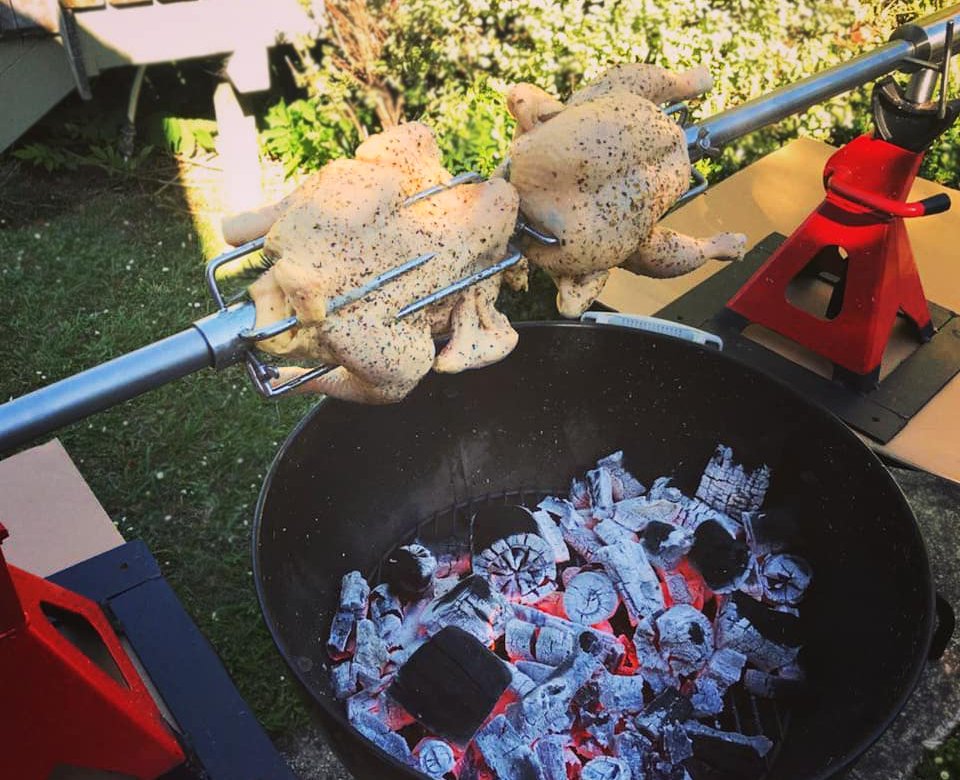
A couple of rotisserie chickens slowly cooking over hot coals
How Long Does Spit Roasting Take?
Cooking time depends on various factors, including:
- Type of meat
- Size of roast
- Amount of heat
- Distance to heat
Under most cooking conditions using charcoal, it was found that on average:
- Pork cuts may take around 1 hour 20 minutes per 1kg of meat
- A whole pig may take around 8 hours
- Lamb cuts may take around 1 hour per 1kg of meat
- A whole lamb may take around 6 hours
- Beef may take around 40 minutes per 1kg of meat
- A whole chicken may take around 1 hour 30 minutes
If you notice that outside of your roast is getting burnt, move the spit further away from the heat.
Use a digital thermometer to make sure that the meat is cooking properly on the inside.
Basting the meat in its own juice is recommended for all types of spit roasting.
This adds the amazing flavour and keeps the skin from burning.
The dripping fat and juices can be easily collected by placing tin trays under the spit.
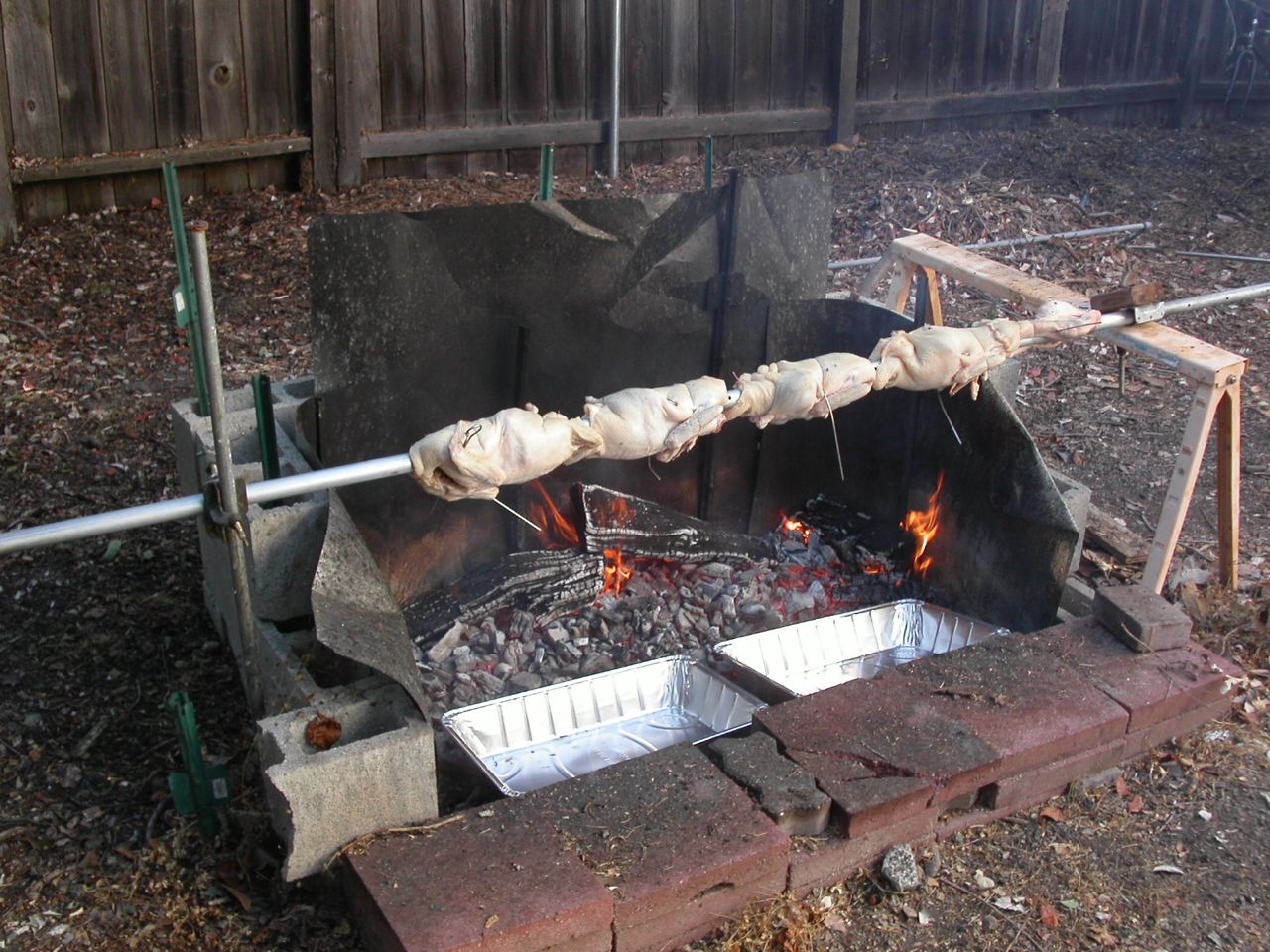
Different kinds of poultry are an excellent addition to the main rotisserie roast | Instructables
How Do I Put Meat on a Spit?
If handling a whole beast (cleaned and gutted), insert the spit into one end of the carcass and push it through until it comes out the other end.
If the spit gets stuck towards the end you might need to break the hip bones of the carcass.
Make sure the meat is sitting in the centre of the spit.
Doing this might take more than one person because the spit will encounter a lot of friction resistance on the way (when dealing with a large pig, for example).
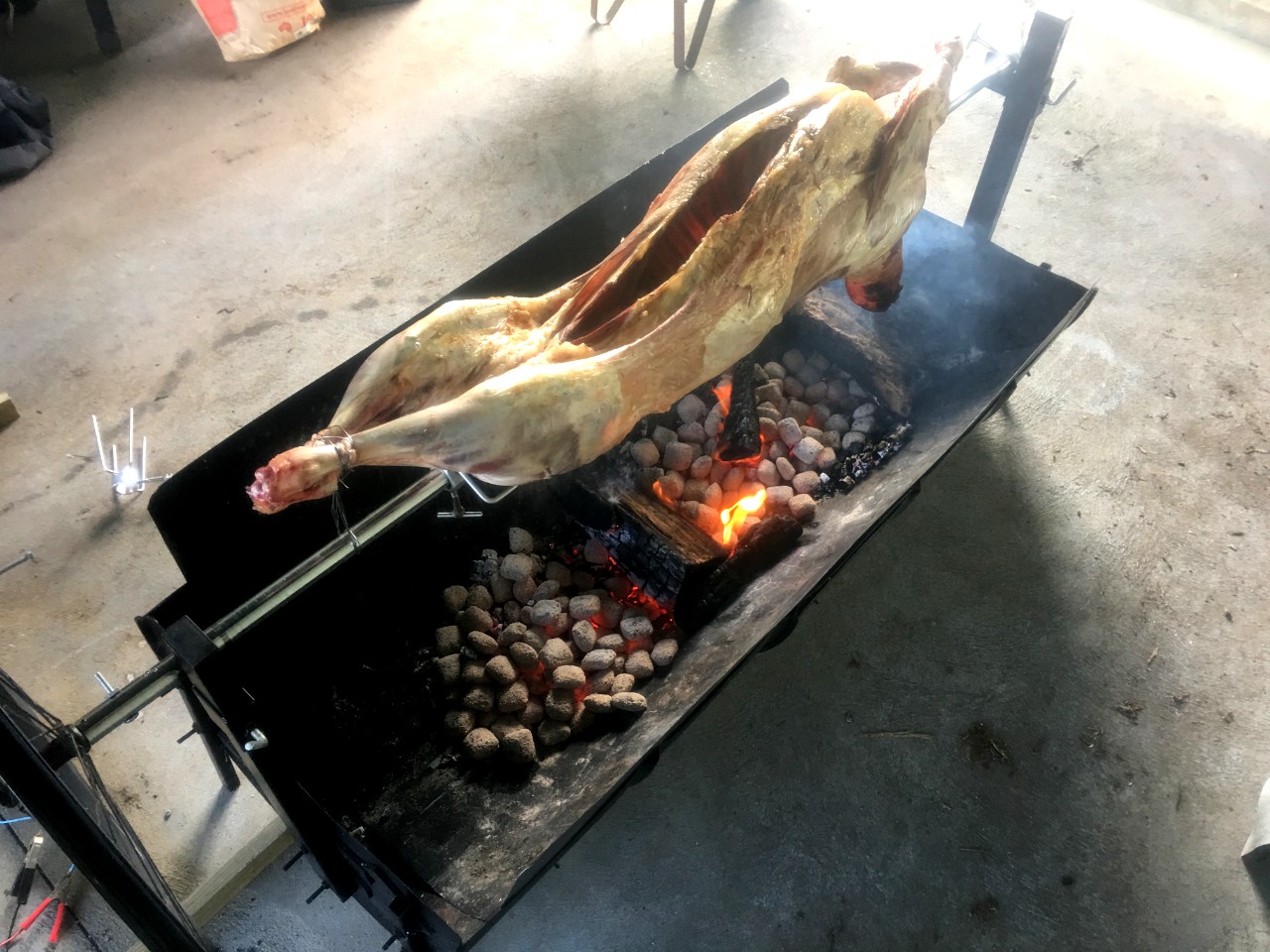
It is a good idea to tie the legs to secure the beast on a spit | Instructables
Skewering chicken or smaller cuts of meat is much easier. Simply slide the meat onto the spit and centre it.
Make sure you do not exceed the weight rating of the spit otherwise it will bend.
Once the meat is secured on the spit you should use spike braces to hold the meat in place and prevent it from rotating on the spit.
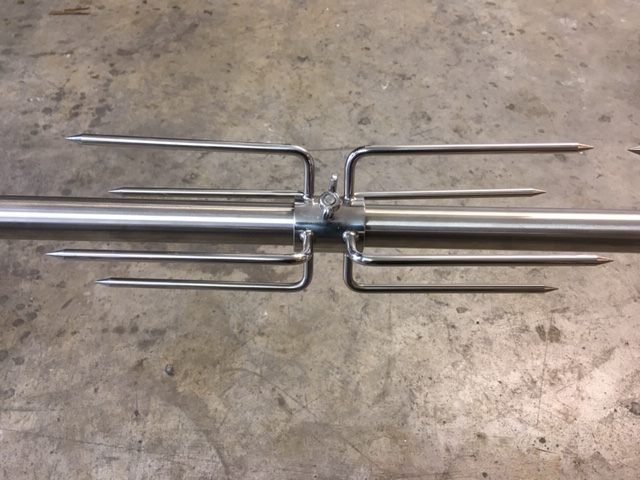
An example of a well made spike brace to hold the meat in place
If you are using your own DIY setup, you might want to drill a couple of holes close to the ends of the spit and use them to tie the meat down with metal wire.
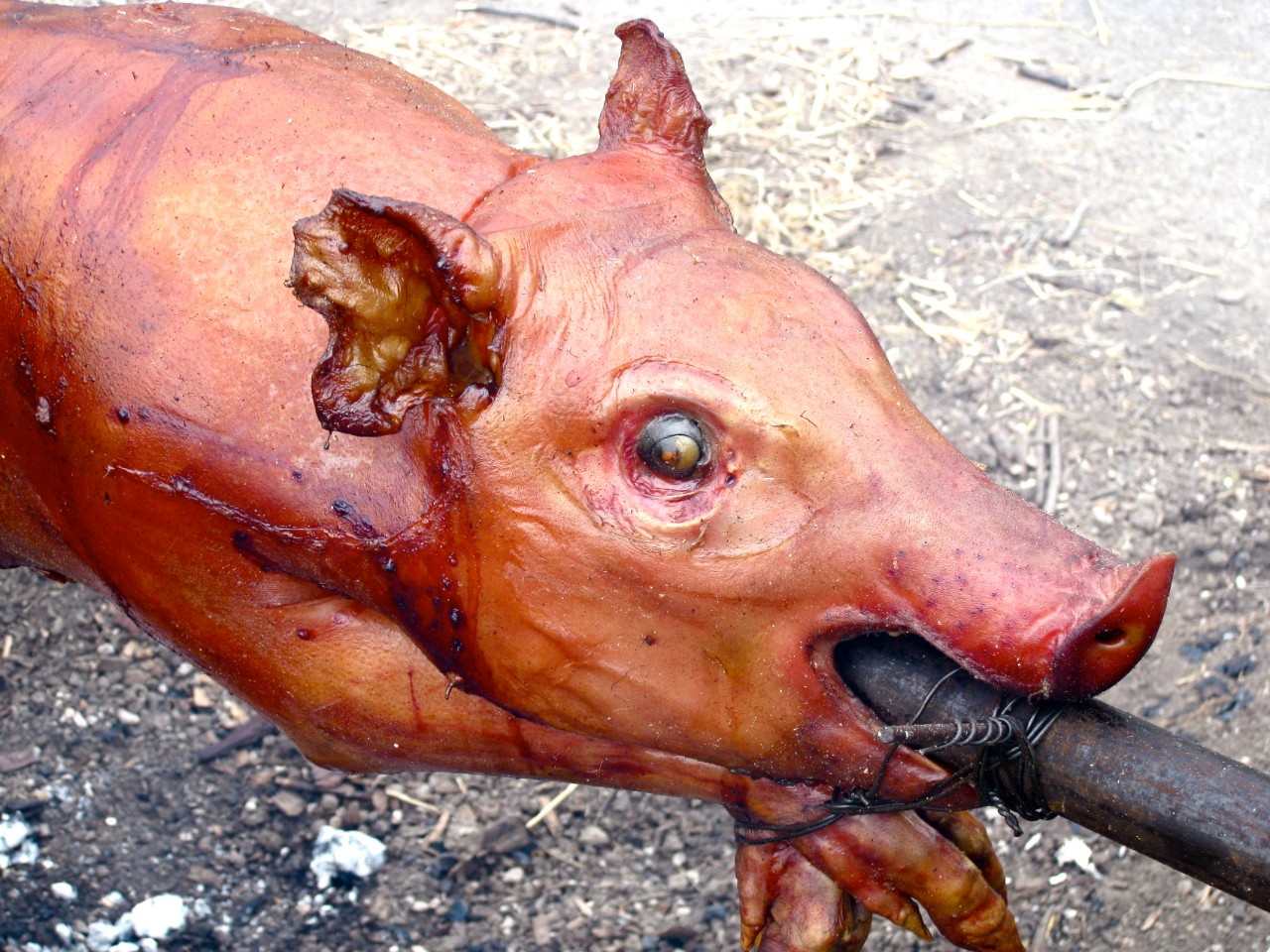
A simple way to secure the meat using metal wire | Instructables
You will also need to balance the whole load because the weight of the beast is usually not distributed evenly (the top side of the animal is usually heavier than the legs).
If not balanced properly, the load on your spit roast motor will be much higher on one side of the animal and much lower on the other, which may damage the motor.
You want to have an even load throughout the spit to make sure the motor functions well.
This can be achieved by attaching counterweights to the spit.
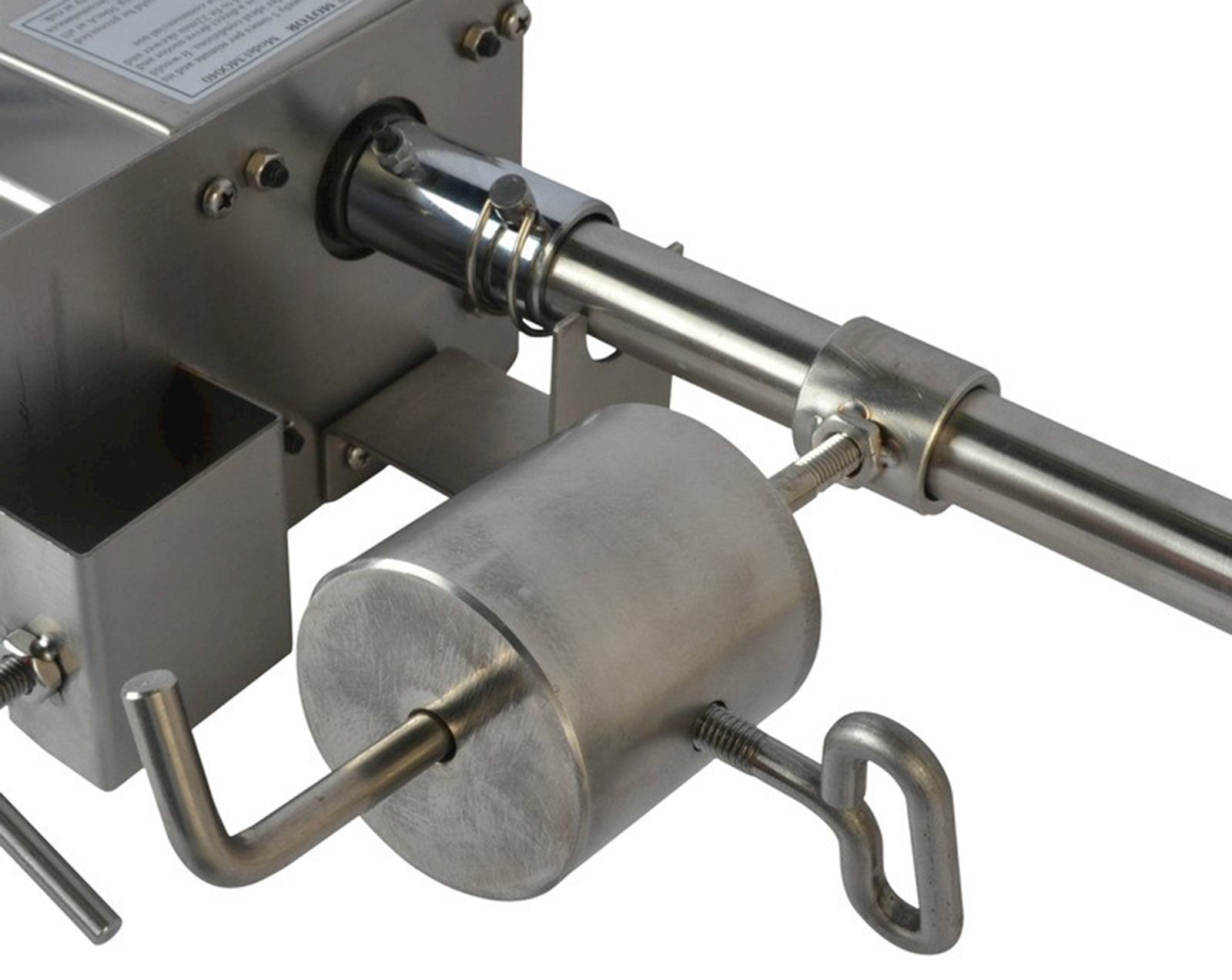
Use a counterweight on the spit to prevent motor overload | TheBbqStore
How Much Meat Will I Need?
If you are planning to roast a whole beast, keep in mind that only about 50% of the bone-in weight will be edible meat.
This is mainly due to drying of the meat during cooking, carving waste and removing the bones.
A good guide is to order a beast weighing 1kg per guest. So if you are planning to feed 15 people, consider buying a 15kg pig or lamb.
Most of us will only eat about 200-300g of meat in one go so there will be plenty of leftovers for everyone to take home.
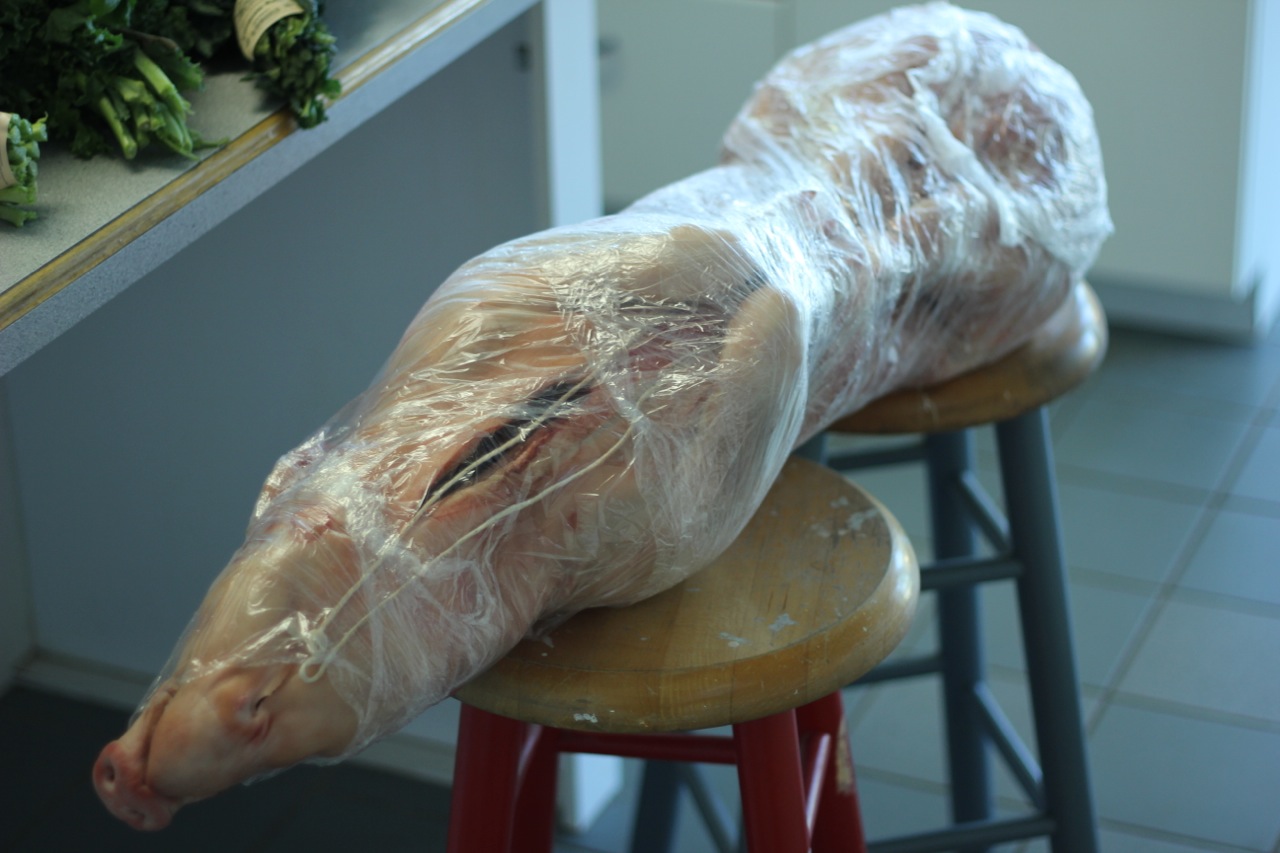
A large spit roasted pig can feed a whole crowd | Instructables
Where Do I Get the Meat?
If you plan to roast a whole beast, the best way is to ask your local butcher – they will know exactly what you need.
Another option is to buy direct from a homekill operator (make sure they follow all food safety procedures).
For smaller cuts of meat or whole chickens, your local supermarket might be the easiest option.
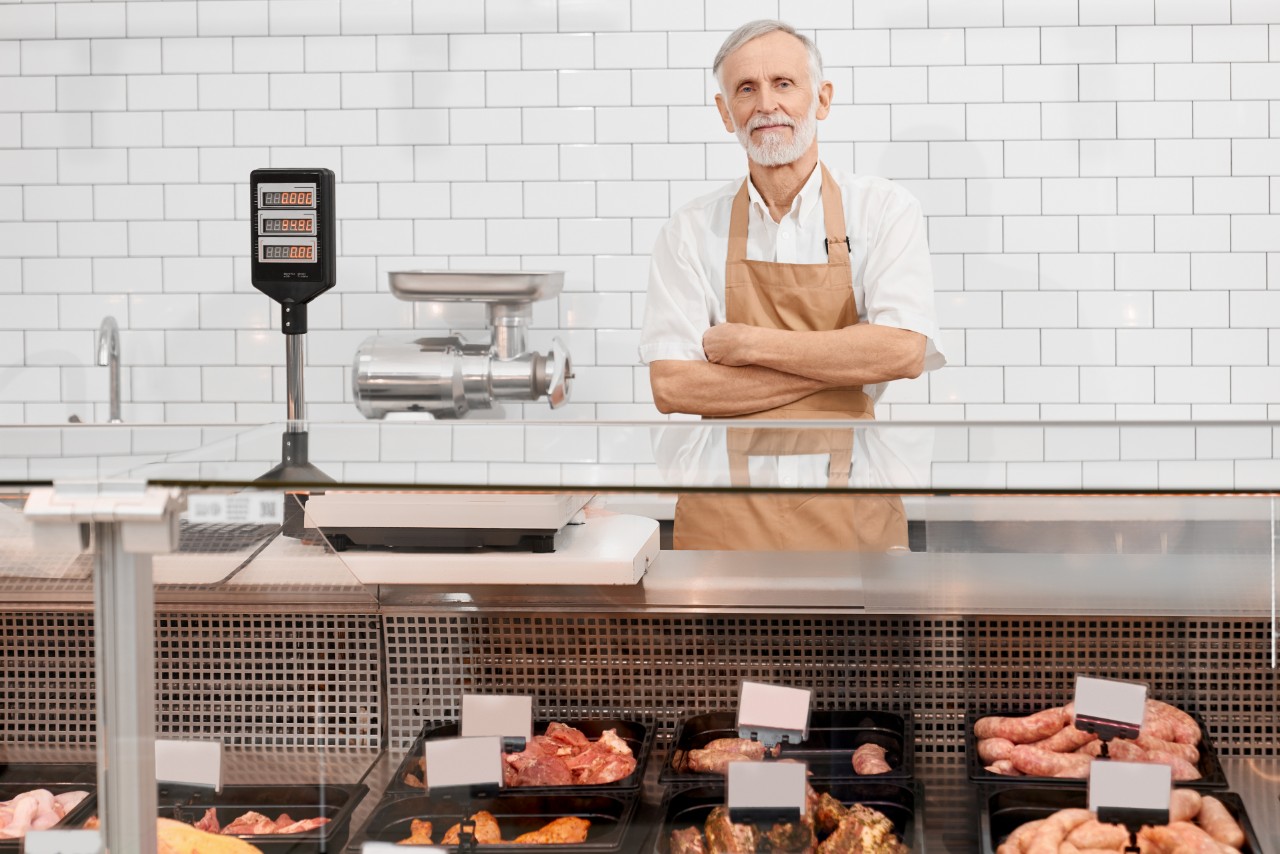
A professional butcher is your best bet when it comes to larger meat cuts | Freepik
Well, there it is!
By now you have gathered enough ideas and information to go out there and make an epic spit roast.
One last thing to go over is how to plan and prepare for that perfect spit roast party. Let’s get right to it.
Chapter 6:
How to Plan a Spit Roast
When it comes to preparing a great rotisserie, planning is king.
The last thing you want is to have a hungry crowd waiting for hours to get their cut of the roast.
Let’s jump in and talk about what you need to keep in mind.

It is handy to know that a proper spit roast takes two days – one day for all the preparations and the next day for the actual roast.
If you don’t have a spit roaster set up you will need to allow time for building one too.
The Set Up
Building a DIY spit roaster will take you anywhere from a few hours to a few days, depending on the availability of all the required tools and materials.
The quickest option is to simply dig a fire pit in your backyard and set up the spit on supports over it.
Making a custom firebox out of metal could take much longer (even a few days) to build.
There are many clever ways to make a spit roaster and people have come up with some pretty inventive setups.
Just check this one out:
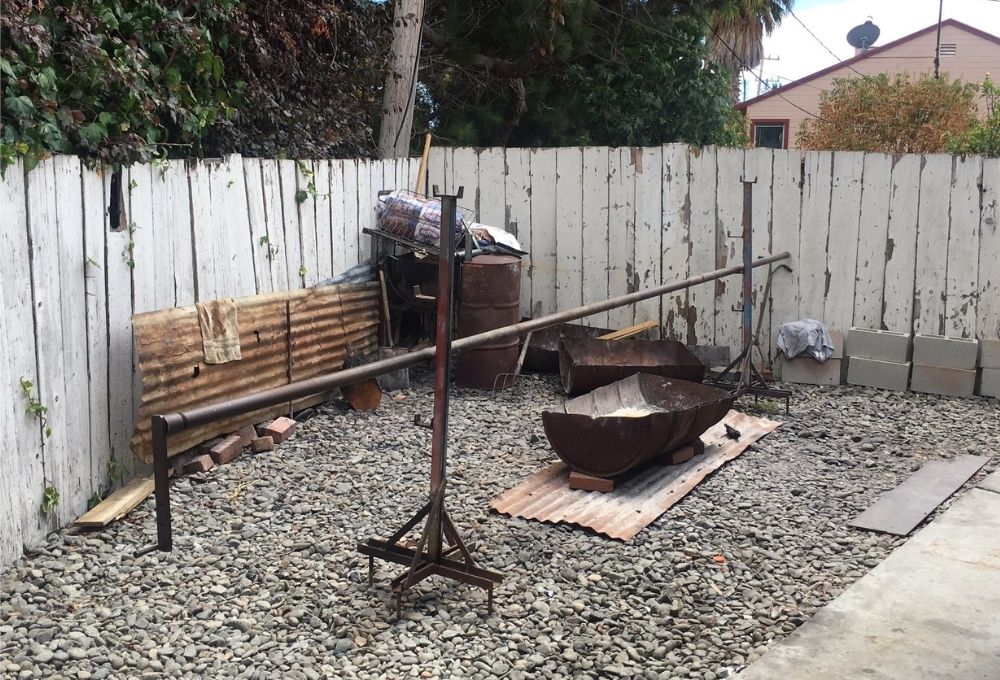
A truly creative backyard spit roast design | @AminiFonua
The Preparations
Once the structural part is done and you have a nice spit roaster sitting in your backyard, it is time to prepare for the roasting day.
First things first – you need to buy the meat and any veggies you like for the side dishes. And whatever you do, do not forget the beers!
Also have a think about the table and seating arrangements for guests, plates & cutlery, refreshments and sun protection (tents and marquees).
Now is a good time to cut up and refrigerate vegetables for side dishes and to marinate the meat overnight, if required.

It always pays to plan ahead when it comes to catering for a big crowd | Freepik
The Roast
Depending on the type of meat, the roasting process can take anywhere from 2 hours to 8 hours.
Considering that you will need to put the meat on the spit and then carve it once cooked, you need to allow a couple of hours on top of the cooking time.
A handy tip is to cook all the side dishes while the meat is roasting to save time.
You can also put some starchy veggies like potatoes or kumara under the cooking roast to cover them in delicious juices and fat dripping off the meat. Yum!
Now is the time to socialise, have fun and (responsibly) enjoy a few cold ones.

Cheers! | Freepik
Now It’s Your Turn
We hope this guide showed you how to make a great spit roast.
Now we’d like to turn it over to you:
What’s the #1 tip from this guide that you want to try first?
Are you going to start using a different type of fuel? Or maybe you’re going to redesign your setup and start using a motor.
Or maybe we have missed something important.
Either way, let us know by getting in touch.

